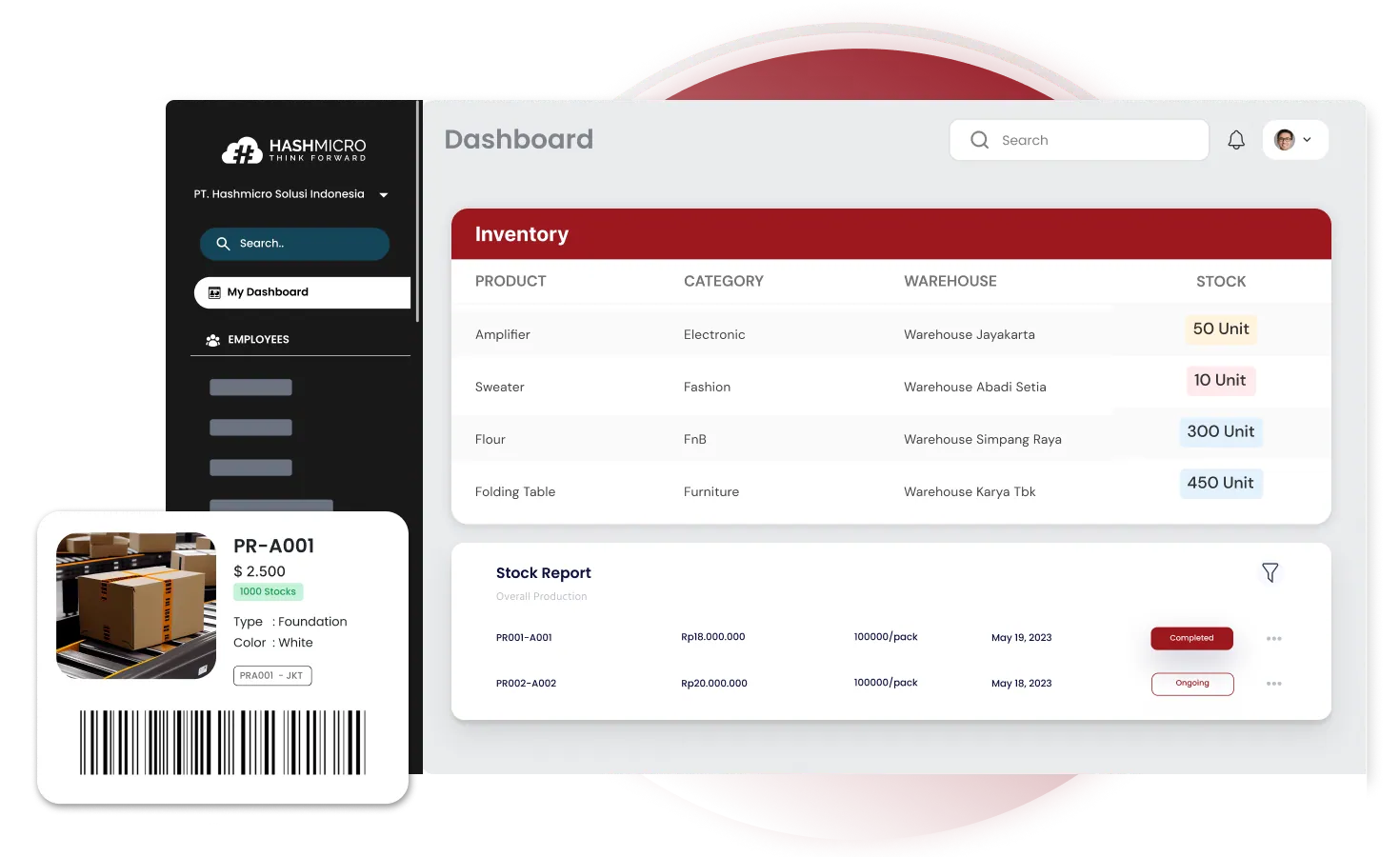Did you know that, according to a McKinsey report, companies can lose nearly half of a year’s profits over a decade due to supply chain disruptions—including poor demand planning? A single disruption could cost 30-50% of a year’s EBITDA, a significant hit that forces any business to re-evaluate its planning strategy.
Whether it’s overproduction leading to unsold goods or underproduction causing empty shelves, both scenarios can hurt your profits and frustrate customers.
However, demand planning isn’t just about crunching numbers—it’s a strategic tool that aligns production, inventory, and customer demand. In today’s fast-paced market, mastering demand planning is essential for thriving, not just surviving.
In this article, we’ll delve into the essential concepts and explain why every business needs effective demand planning to stay ahead.
Table of Contents

Key Takeaways |
Table of Contents

What is Demand Planning?
Demand planning is a strategic process that helps businesses predict customer demand for their products and services. Its main goal is to ensure that companies can meet customer needs without producing too much or too little.
This process involves analyzing a variety of factors such as historical sales data, market conditions, seasonal trends, and future market predictions. By understanding these elements, businesses can develop accurate production plans that align with demand, preparing them for changes in buying behavior.
A key part of scm, demand planning helps businesses adjust inventory levels and production schedules based on predicted demand. This ensures they avoid overproduction (leading to excess inventory and high storage costs) or underproduction (causing stockouts and missed sales opportunities).
Effective demand planning keeps operations smooth from manufacturing to delivery, reducing bottlenecks and improving overall efficiency, while also boosting customer satisfaction.
Why is Demand Planning Important?
Demand planning is essential because it helps businesses avoid the costly mistakes of overproduction and underproduction. Overproduction leads to unsold inventory, increased storage costs, and potential waste, especially if the products become outdated.
Underproduction, on the other hand, means not having enough stock to meet customer demand, which can result in missed sales and dissatisfied customers. Both scenarios can hurt profitability.
When done well, demand planning allows businesses to produce the right amount of products, minimizing waste and reducing excess inventory. Customers benefit too—they receive the products they want without delays, which increases their satisfaction and loyalty. Ultimately, effective demand planning saves money and helps build long-term customer relationships.
Key Elements of Effective Demand Planning
To be successful, demand planning must include a few key elements that work together to create a balanced approach to managing customer demand.
1. Product Portfolio Management
Managing a broad range of products can be challenging. Demand planners need to ensure each product category matches customer demand. This requires carefully balancing stock levels to avoid both shortages and overstocking. Proper product management ensures inventory stays lean and responsive.
2. Statistical Forecasting
Using statistical forecasting, businesses can predict future sales by analyzing historical data and trends. This method allows demand planners to create more accurate forecasts, reducing the chances of errors that occur with manual estimates. With this approach, businesses can better prepare for fluctuations in demand.
3. Trade Promotion Management
Promotions and sales can have a major impact on demand. By managing trade promotions effectively, companies can align their marketing strategies with demand forecasts, ensuring they have enough stock during peak sales periods without overshooting demand.
By mastering these elements, businesses can create a demand planning process that keeps inventory lean, reduces costs, and ensures customer needs are met. Next, let’s dive into how demand planning and demand forecasting differ.
Demand Planning vs. Demand Forecasting
Before we dive headfirst into demand planning, let’s clear up a common mix-up—demand planning and forecasting aren’t the same thing, even though they’re often thrown around like synonyms. Think of forecasting as the weather report and planning as deciding whether to pack an umbrella, sunscreen, or both!
Differences between demand planning and forecasting
Demand forecasting is all about predicting future sales using past data, trends, and a bit of statistical magic. It tells you what’s likely to happen. Demand planning takes it a step further by turning those predictions into actual strategies. In short, forecasting guesses the demand, while planning figures out how to handle it.
When to use each process
Forecasting works best for short to medium-term predictions, helping you stay on top of market shifts. In contrast, planning delves deeper by integrating those forecasts into long-term strategies to ensure smooth operation of your production, inventory, and supply chain. Forecast for insights, and plan for success!
Now that we’ve clarified the difference, let’s break down the steps for mastering demand planning like a pro.
Steps for Successful Demand Planning
Demand planning isn’t something you can wing—it requires a step-by-step approach to make sure it’s both accurate and reliable. Think of it as assembling a puzzle: you need all the right pieces to see the full picture.
Gathering and Preparing Data
Your demand plan is only as good as the data you use. Collecting past sales figures, market trends, and factors like seasonal changes is where it all begins. This data gives you the foundation to make smart predictions about future demand.
Defining Process Models
Once you’ve got the data, it’s time to turn it into action. Define clear models that show how your business will respond to different demand scenarios. These models are like your decision-making cheat sheet, helping you prepare for whatever the market throws your way.
Implementing and Monitoring the Plan
After you’ve created your demand plan, the work doesn’t stop there. It’s essential to monitor how the plan performs and make adjustments as needed. Market conditions change, and your plan needs to stay flexible and up to date.
By following these steps, you’re well on your way to a demand plan that actually delivers. Next up, we’ll check out some best practices to make your demand planning even sharper.
Best Practices for Demand Planning
Even with a solid plan in place, there are always ways to make it better. Let’s dive into some best practices that can take your demand planning from good to great.
Implementing the Right Software Tools
Gone are the days of manual guesswork—demand planning software is here to help. These tools pull data from across your business and let you tweak your plans in real-time, ensuring you’re always working with the freshest info.
Cross-department Collaboration and Communication
Demand planning is a team sport. Getting your sales, marketing, and production teams on the same page is key to making the plan work. When everyone collaborates, the chances of a mix-up go way down, and efficiency goes way up.
Adjusting Plans Based on Market Trends and Data
Markets can shift faster than you can say “stockout.” Keeping your demand plan flexible and adjusting it based on the latest trends and customer behavior will help your business stay competitive and nimble.
With these best practices in your toolkit, you’re setting up for success. But what’s next? Let’s look at how technology is shaping the future of demand planning.
The Future of Demand Planning
As technology continues to transform industries, demand planning is no exception. From automation to adapting to global shifts, the future is all about staying ahead of the curve.
Technological Advancements and Automation
Say hello to the future—automation tools like machine learning and AI are making demand planning smarter. These technologies sift through huge amounts of data to predict trends and produce highly accurate forecasts, taking much of the guesswork out of the process.
Evolving Methods in Response to Global Supply Chain Shifts
With supply chains growing more complex, businesses need to evolve their planning methods. Flexibility and quick adaptation to supply chain disruptions will be critical for future success. The demand planners of tomorrow will need strategies that are as dynamic as the markets they serve.
Mastering demand planning isn’t just about improving operations—it’s about future-proofing your business. By staying on top of technological advancements and adopting best practices, you can ensure your business remains competitive and profitable in an ever-changing market.
How HashMicro’s Software Can Take the Hassle Out of Demand Planning
Doing demand planning manually can lead to all sorts of headaches—data entry errors, missed trends, or simply not being able to react quickly enough to changes in demand. HashMicro’s Inventory Software steps in to eliminate these issues and make your demand planning more efficient and precise:
- Automated Demand Forecasting: Say goodbye to guesswork. Our software uses historical data and market trends to predict demand accurately, reducing the risk of overproduction or underproduction.
- Real-Time Data Integration: No more sifting through outdated spreadsheets. Get instant updates on sales, inventory, and trends, allowing for timely adjustments that align perfectly with Just-in-Time inventory practices.
- Seamless Multi-Location Management: Managing inventory across multiple locations becomes easy, with unified data to help you track and optimize stock in each location.
- Smart Reordering System: Inventory platform by Hashmicro, automate reorder points to ensure you always have the right amount of stock, preventing shortages and overstock situations.
- Custom Reports and Analytics: Gain valuable insights with tailored reports that help you make data-driven decisions and fine-tune your demand planning strategies.
If you’re ready to ditch the manual work and upgrade your demand planning, HashMicro’s Inventory Software is your answer. Try a free demo and see how it can save you time, money, and plenty of frustration!
Conclusion
In a nutshell, demand planning is your secret weapon for balancing customer needs with smart operations. By nailing the forecasts, managing your product lineup, and mastering those promotional spikes, you can avoid the classic business blunders of overproducing or underproducing. As a result, you’ll save both cash and customer loyalty in the process.
But let’s be real, trying to do all that manually? Not ideal. That’s where HashMicro’s Inventory Software steps in. It’s like having a demand-planning superhero by your side—forecasting demand, managing inventory, and syncing data in real-time. Want to see the magic for yourself? Grab a free demo and start leveling up your planning game!

Frequently Asked Questions
-
What is the method of demand planning?
Demand planning involves analyzing historical sales data, market trends, and external factors to accurately forecast customer demand. This process helps adjust inventory and production levels to efficiently meet demand.
-
What are the 3 key aspects of demand planning?
The three key aspects of demand planning are Product portfolio management, Statistical forecasting, Trade promotion management. These elements help balance inventory, predict demand, and align marketing efforts.
-
What are the 2 categories between supply and demand planning?
Demand forecasting and supply planning are the two categories. Demand forecasting predicts future sales, while supply planning ensures that production and inventory align with those predictions for a smooth supply chain.
{
“@context”: “https://schema.org”,
“@type”: “FAQPage”,
“mainEntity”: [{
“@type”: “Question”,
“name”: “What is the method of demand planning?”,
“acceptedAnswer”: {
“@type”: “Answer”,
“text”: “Demand planning involves analyzing historical sales data, market trends, and external factors to accurately forecast customer demand. This process helps adjust inventory and production levels to efficiently meet demand.”
}
},{
“@type”: “Question”,
“name”: “What are the 3 key aspects of demand planning?”,
“acceptedAnswer”: {
“@type”: “Answer”,
“text”: “The three key aspects of demand planning are Product portfolio management, Statistical forecasting, Trade promotion management. These elements help balance inventory, predict demand, and align marketing efforts.”
}
},{
“@type”: “Question”,
“name”: “What are the 2 categories between supply and demand planning?”,
“acceptedAnswer”: {
“@type”: “Answer”,
“text”: “Demand forecasting and supply planning are the two categories. Demand forecasting predicts future sales, while supply planning ensures that production and inventory align with those predictions for a smooth supply chain.”
}
}]
}
























